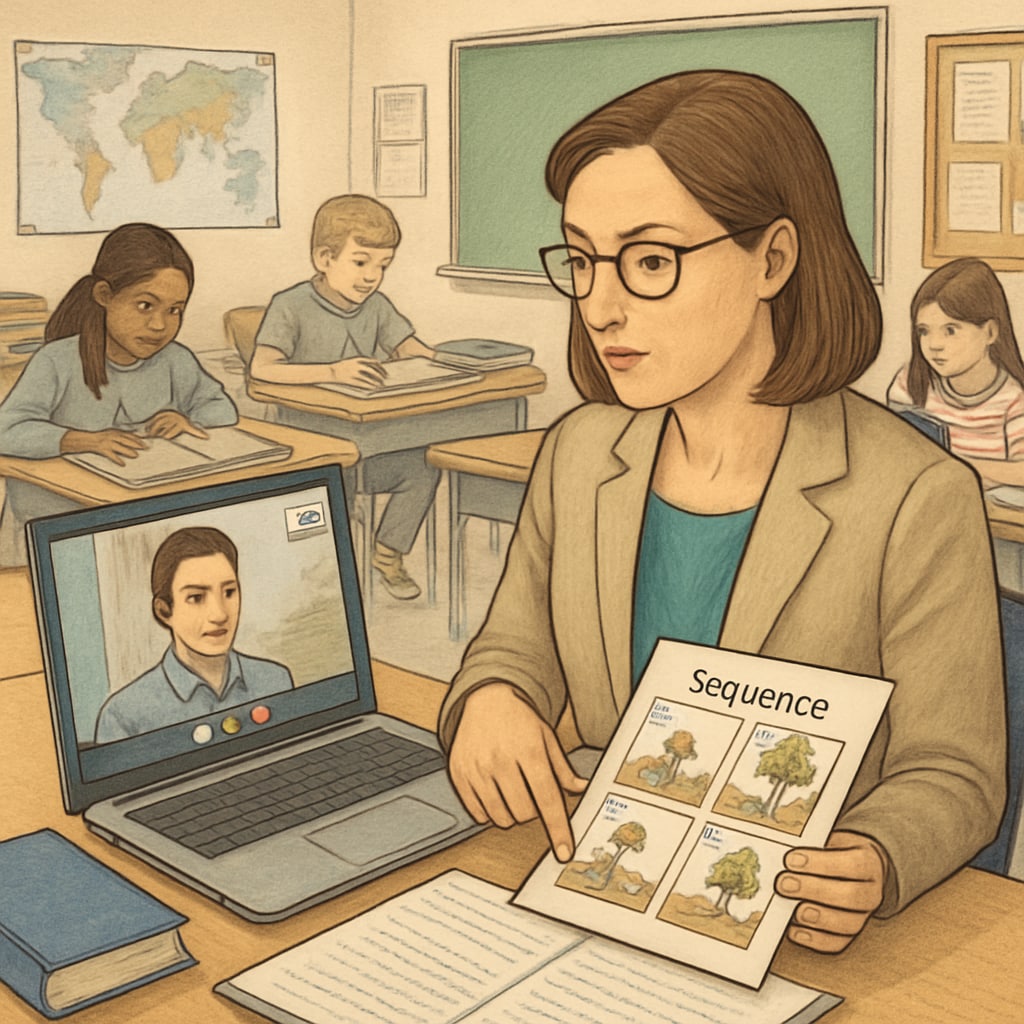In the dynamic realm of K-12 education, the effective implementation of teaching activities often hinges on structured guidelines. The Zoom and ReZoom teaching activities, known for fostering creativity and collaboration, require a carefully planned sequence to maximize their educational impact. Missing or poorly arranged sequencing guidelines can hinder the intended outcomes. This article examines the importance of Zoom/ReZoom activity sequencing, the challenges posed by the absence of structured guidelines, and provides actionable strategies to help educators restore and enhance their teaching methods.
Understanding the Core of Zoom and ReZoom Activities
Zoom and ReZoom are interactive teaching activities designed to promote sequencing, teamwork, and critical thinking. In the Zoom activity, participants work collaboratively to sequence a series of interconnected images, each representing a smaller part of a larger story. ReZoom reverses this process, challenging participants to deduce and rebuild the narrative by zooming out. These activities are particularly effective in teaching students about perspective, context, and problem-solving within a group setting.
However, the success of these activities heavily relies on the proper arrangement of the cards or materials. Without a structured sequence, the narrative flow can become confusing, reducing the intended educational value. Teachers need clear guidelines to ensure the activity unfolds as designed and engages students effectively.

The Impact of Missing Sequencing Guidelines
The absence of a proper sequence can disrupt the learning experience in several ways. First, students may struggle to grasp the overarching narrative, leading to frustration and disengagement. Second, the educational objectives, such as improving critical thinking or teamwork, may not be fully achieved. Lastly, teachers may spend unnecessary time troubleshooting the activity, detracting from the overall lesson plan.
For example, imagine a classroom where the Zoom cards are shuffled incorrectly. Instead of progressing logically, the story jumps erratically, leaving students confused about how the pieces connect. Such disruptions highlight the critical need for sequencing guidelines to maintain the activity’s flow and purpose.
Practical Strategies for Rebuilding Activity Sequencing
To restore the effectiveness of Zoom and ReZoom activities, consider the following strategies:
- Organize Materials in Advance: Before the activity, ensure all cards or materials are arranged in the correct order. Use numbering or labeling systems to simplify the process.
- Create Backup Guides: Develop a reference sheet or visual guide for the activity sequence. This can serve as a quick check for teachers during preparation.
- Engage Students in Setup: Involve students in the preparation phase as a warm-up exercise. This encourages ownership and helps them familiarize themselves with the task.
- Access Online Resources: Many educational websites and forums offer downloadable sequencing guides for Zoom/ReZoom activities. Utilize these resources to save time and ensure accuracy.
- Adapt for Diverse Classrooms: Modify the activity to suit the age, skill level, and learning preferences of your students. For younger learners, consider simplifying the narrative or providing hints.
These strategies not only improve the activity’s flow but also empower educators to focus on facilitating discussion and deeper learning.

Finding and Utilizing Sequencing Resources
Access to high-quality resources is essential for teachers aiming to implement Zoom and ReZoom activities effectively. Several platforms provide ready-made sequencing guides, activity templates, and instructional videos. For example:
- Teaching Channel offers practical tips and video examples for classroom activities.
- Edutopia provides expert insights into innovative teaching practices, including collaborative learning strategies.
Additionally, educators can collaborate with peers to share resources and best practices. Online communities and forums for teachers often feature discussions and downloadable materials tailored to specific classroom needs.
Conclusion: Elevating Classroom Engagement
Zoom and ReZoom activities hold immense potential for fostering creativity, collaboration, and critical thinking in K-12 students. However, their success depends on carefully planned sequencing. By addressing the challenges posed by missing guidelines and implementing the strategies outlined above, educators can ensure these activities achieve their full educational impact.
In a rapidly evolving educational landscape, having access to structured resources and practical strategies is invaluable. With the right tools, teachers can transform these interactive activities into powerful learning experiences that resonate with students long after the lesson ends.
Readability guidance: This article maintains short paragraphs, uses lists for clarity, and includes transitional phrases to enhance flow. The strategies provided are practical and actionable, ensuring accessibility for educators across varying experience levels.


